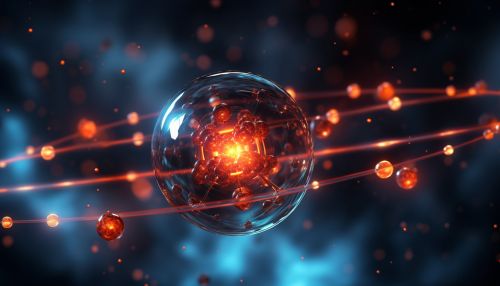Neutron Scattering
Introduction
Neutron scattering, a powerful technique used in the study of materials, involves the scattering of neutrons by atomic nuclei. This process provides valuable information about the structure and dynamics of materials at the atomic or molecular level.
Basic Principle
The basic principle of neutron scattering involves the interaction of a neutron with an atomic nucleus. This interaction causes the neutron to scatter, changing its direction and possibly its energy. The scattered neutrons are then detected and analyzed to provide information about the material being studied.


Types of Neutron Scattering
There are two main types of neutron scattering: elastic and inelastic.
Elastic Neutron Scattering
In elastic neutron scattering, the energy of the incoming neutron is equal to the energy of the outgoing neutron. This type of scattering is used to study the static structure of materials.
Inelastic Neutron Scattering
In inelastic neutron scattering, the energy of the incoming neutron is not equal to the energy of the outgoing neutron. This type of scattering is used to study the dynamic behavior of materials.
Neutron Sources
Neutrons for scattering experiments are typically obtained from nuclear reactors or spallation sources.
Nuclear Reactors
Nuclear reactors are a common source of neutrons for scattering experiments. The neutrons are produced by the fission of heavy elements such as uranium or plutonium.
Spallation Sources
Spallation sources produce neutrons by bombarding a heavy metal target with high-energy protons. The resulting spallation reactions produce a large number of neutrons.
Applications of Neutron Scattering
Neutron scattering has a wide range of applications in various fields such as physics, chemistry, biology, and materials science.
Physics
In physics, neutron scattering is used to study the structure and dynamics of condensed matter. This includes studies of magnetic materials, superconductors, and complex fluids.
Chemistry
In chemistry, neutron scattering is used to investigate the structure and dynamics of molecules. This includes studies of chemical reactions, molecular dynamics, and the properties of liquids and gases.
Biology
In biology, neutron scattering is used to study the structure and dynamics of biological macromolecules. This includes studies of proteins, nucleic acids, and membranes.
Materials Science
In materials science, neutron scattering is used to investigate the properties of materials. This includes studies of polymers, ceramics, metals, and glasses.
